What is Traditional Indian Puppetry?
Puppetry arts, or Kathputli Kala, is a traditional Indian folk art form. Traditionally, it was a form of entertainment where the puppeteer (Sutradhara—’Sutra’ meaning ‘string’ and ‘dhara‘ meaning ‘holder’) manipulated puppets to narrate a beautiful story that would inspire and entertain the audience. The puppets were colorful human-like figures who would’ve worn traditional Indian dresses, and faces would have been painted on their heads. The puppets danced to the rhythm and became characters of the story. These shows were typically conducted at fairs (Mela). The puppeteer would travel across villages to perform the show.
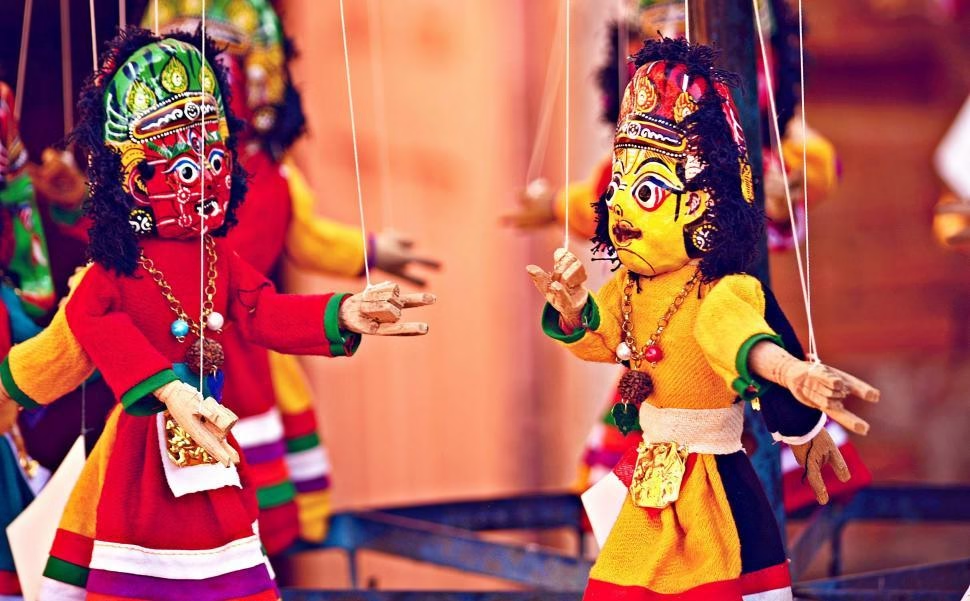
Origin of Indian Puppetry.
Puppetry has always been a huge part of the ancient history of India. Puppets were mentioned in one of the oldest literary texts, the Mahabharata, written around the 4th century CE by the Sage Vaysa. In one of the scenes of the texts, Lord Krishna (a character from the Mahabharata) says, “The world is under the full control of the Supreme Lord; therefore, everyone is like a puppet in the hands of a puppet master.” to Arjuna (another character from the text). This itself becomes a written proof that mentions puppetry and puppets in ancient India.
Along with literary records and legends existing for a long period, there are archaeological findings as well. Archaeologists discovered dolls and animal-like figures attached to strings and estimated they were used as puppets during the Indus Valley civilization, which dates back to 2500 BC.
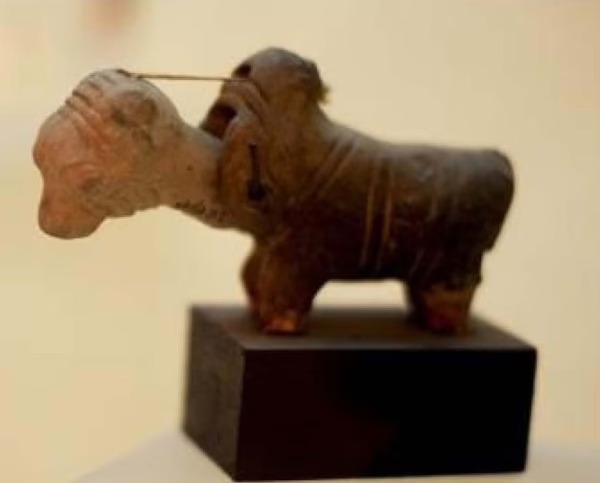
Types of Puppetry in India.
India, a country with rich diversity, reflects its regional attires and traditions through puppetry. These puppets are a reflection of the tradition and culture of their region. Basically, there are four types of puppets in India, which are:
- String Puppets
- Shadow Puppets
- Rod Puppets
- Hand/Glove Puppets
These types of puppets have different names and forms according to their region. Let us understand this further.
- String Puppetry
Strings are attached to the puppets, making them more articulate in their movements. These strings are attached to the puppet body parts, and a puppeteer controls these with the help of a wooden stick to which the strings are connected and controlled, or the strings are tangled in the puppeteer’s fingers.
Kundhei, Odisha (the eastern Indian state):
Puppets, regional to Odisha, are called Kundhei string puppets. The puppets don’t have legs but long skirts, which gives a flowing illusion to the puppets.
Kathputli, Rajasthan (the northwestern state of India):
Puppets, regional belonging to Rajasthan, are made of wood and dressed in a medieval Rajasthani look.
Gombeyatta, Karnataka (southwest Indian state):
Puppets belonging to the region of Karnataka are attached with strings. Designed like characters from Yakshagana, a traditional theater form of Karnataka. Some of the complicated movements are handled by two or more puppeteers at a time.
Bommalattam, Tamil Nadu (a south Indian state):
These puppets are the largest and the heaviest. They can be as large as 4.5 feet in height and heavy up to 10 kilograms. The Bommalattam puppetry can be further divided into 4 parts: Vinayak Puja, Komali, Amanattam, and Pusenkanattam.
2. Shadow Puppetry
Here, puppets are flat figures behind a translucent white screen shadowed with the help of a bright light source. In traditional times, the light sources were Diya (an earthen lamp filled with oil and lit up with the help of a cotton thread) / Lantern. Shadow puppetry was performed at night. But in modern times, the performance could be done at any time, as now the sources of light have changed with time.
Tholu Bommalata, Andhra Pradesh (a state on the east coast of southern India):
Flat figures are made from leather and both sides of the leather are painted. These puppets dance to classical music and are based on Purans (a collection of Hindu religious texts that include legends, mythology, and traditions).
Togalu Gombeyaata, Karnataka:
Togalu Gombeyaata puppets are bigger than the common shadow puppets. The size of the puppets varies according to the character’s socio-economic level.
Ravanachhaya, Odisha:
Ravanachhaya is a traditional shadow puppetry form from Odisha. The name translates to “the shadow of Ravana”, the demon-king from the Hindu epic Ramayana. These puppets are small and have no joints to articulate the movements.
3. Rod puppet
In this form, rods are attached to the puppets to manipulate. Such puppetry is commonly seen in West Bengal (a northwest state of India). They are supported and attached to thin rods, which are manipulated by the puppeteer to articulate the movements. As seen earlier in shadow puppet play, rods are used to manipulate the puppets behind the screen. This form is also used for flat puppets as well as for dolls.
Rod puppetry is known as Putul Nach in West Bengal. Puppets are 3 to 4 feet in height, carved with wood, and follow the artistic style of the particular region. Another form of rod puppet have puppets as big as humans; puppet’s joints are attached to the limbs of the puppeteer and the puppet to copy the act of the puppeteer; now this type of form is nearly extinct.
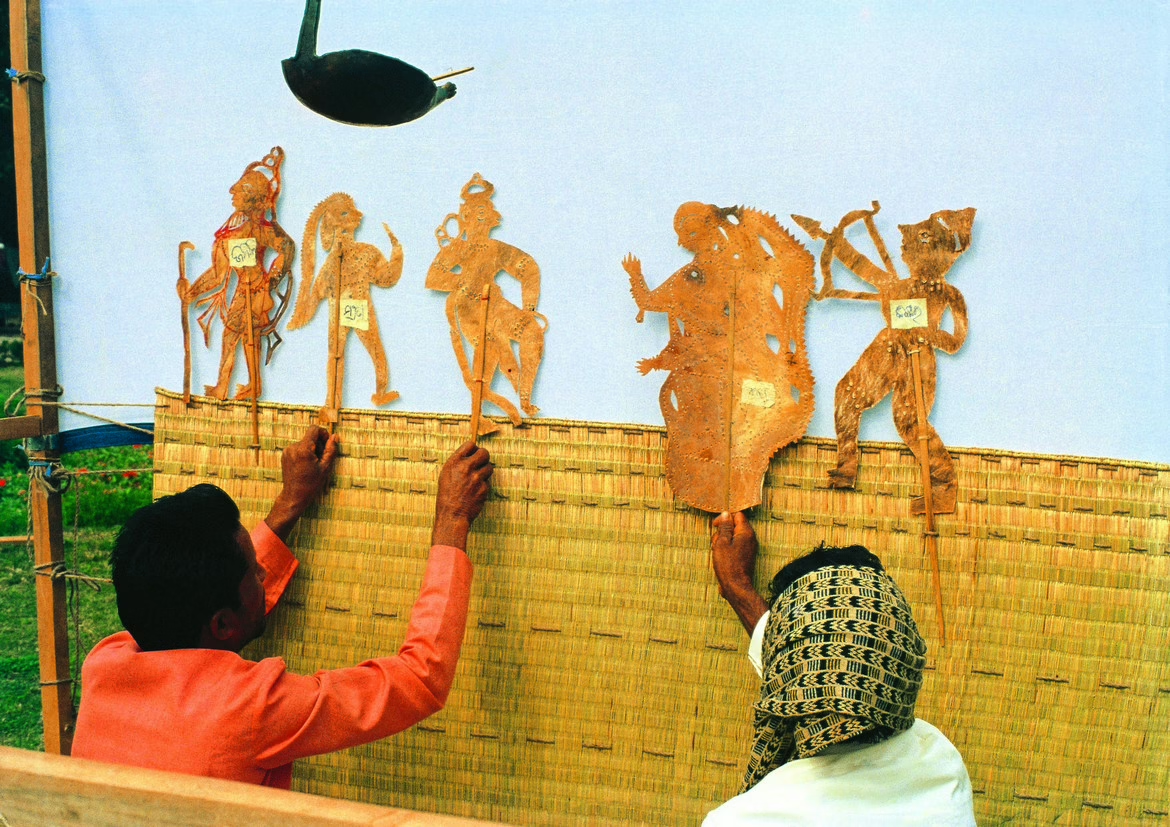
4. Golve/Hand puppetry
This form is also popular in the West. In hand/glove puppetry, the puppet’s head is made up of cloth, and the rest is a flowing skirt, manipulated by the hand of the puppeteer from inside of the puppet and making movements with the help of fingers.
This type of puppetry was popular in West Bengal, Odisha, Uttar Pradesh (a northeastern state of India), and Kerala (a south Indian state).
In Uttar Pradesh, the stories were based on social issues, whereas in Odisha the stories were based on the legends of Radha and Krishna (both are characters of Hindu Mythology and are Hindu goddesses and gods)
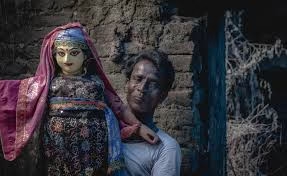
Pavakoothu, Kerala:
In Kerala, hand puppetry emerged from the inspiration of the classical dance-drama form Kathakali. Usually, the themes are Ramayana and Mahabharata (both are legendary stories of Hindu mythology, and the characters of these stories are gods and goddesses).
Sakhi Kundhei Nata, Odisha:
Sakhi Kundhei Nata is a popular glove puppetry form in Odisha, particularly in Odisha’s Kendrapara district. The group of puppeteers travels from villages to perform. The plats are generally based on the legends of Lord Krishna and Radha.
Beni Putul, West Bengal:
Beni Putul is a form of puppetry from West Bengal. The name, Beni Putul translates to “commercial dolls”. These dolls are about 2.5 feet in height. Traditionally, Beni Putul is a solo act, but the puppeteer would travel with a small group of musicians. Beni Putul has suffered a marked decline as a performing art, with less than ten families in Padmatamli still practicing it.
How Puppetry Arts and Dance are related?
Indian puppet art has always been a huge part of Indian culture and literature. As mentioned earlier, puppetry plays a vital role in keeping alive the legends and traditions. It is a folk art usually performed with Indian classical background music. Certain puppets danced to the rhythms. For example, Kathputli, a Rajasthani puppet, danced to the regional music; similarly, Pavakoothu, from Kerala, is a dance drama form of puppetry. And many other forms of puppetry dance to the beats of music.
Music becomes an important instrument to enhance the effect of drama in puppet dance. Traditional instruments used are the flute, drum, or khol, and two pairs of cymbals. Nowadays, harmonium and tabla are also used.

Modern-day Indian Puppetry.
Indian puppetry form varies in regions, but all together somewhere it shares a common ground. As we talked earlier in the traditional era, puppetry shows were performed in Melas and the puppeteer traveled across villages; nowadays there is availability of theater, so unlike in older times, puppetry is now experienced in some theaters. But in today’s time, unfortunately, this art form is becoming endangered.
With the availability of a plethora of content and people not valuing the traditional entertainment form, not only for entertainment but also for culture, people are forgetting that puppetry in India is so rich. However, Indian puppetry is not dead, less practiced, but not extinct. Puppetry is practiced in theatres, not in open fields, and uses pre-recorded songs, but is alive.
Modern Indian puppetry is influenced by the West as well. But nowadays, hand puppets are more hyped, even in the West. There are also good things about modern puppetry; the first is its wide range of audience. Then emerged regional diversity. With a career in the field and popularity for their performance, contemporary puppeteers received awards. Talking about contemporary puppeteers, Anurupa Roy, a puppeteer from New Delhi, received the Shankar Nag Award from Quasar Thakore Padamsee at Ranga Shankara on November 4, 2017 for her contribution to theatre. She is the first generation puppeteer.
Popular Puppeteers from India.
Talking of contemporary puppeteers, let us talk about four renowned Indian puppeteers—Suresh Dutta, Ranganatha Rao, Dadi Pudumjee, and Ramdas Pandhye. These puppeteers not only contributed to keeping alive the tradition but also achieved popularity with their unique techniques.
Puppetry and Indian Cinema.
When we talk about India, somehow we subconsciously think of Indian cinema. Indian cinema is rich with lots of entertainment, similar to Indian puppet perfomances, which varies from region to region; Indian cinema is much more likely to differ from region to region. It is broadly divided based on language, like for Hindi Cinema it’s Bollywood, then for South Indian cinema the language varies, and the industry too. There’s Marathi cinema, Bhojpuri cinema, etc.
Puppetry in Indian cinema is exclusively shown. For instance, in the Marathi movie Zhapatlela, starring Laxmikant Berde, he plays the role of a puppeteer/ventriloquist haunted by a hand puppet doll. Although it is a horror comedy movie that is so popular, this movie has highlighted the art of glove puppetry and the struggles of becoming a puppeteer.
There are other movies as well where puppetry has been shown as the main theme of the film or the character is involved with puppetry or somehow puppets/puppetry are involved; here’s the list of a few movies: Paheli, Gudia, Ek Thi Ladki, Dil Ruba, Begunah, Chori Chori, Sargam, Kathputli, Mere Apne, Mahan, Akele Mat Jayion, and more.
Conclusion
Puppetry arts are now unfortunately not practiced as commonly as before. But still, puppet play art have shaped the tradition of India and in some way kept alive the legendary stories of gods and demons. Puppet performances, in older times, was seen as a form of entertainment, but puppetry is not only a form of entertainment but also a form that spreads values and humanity. With time puppetry in India has evolved and has now adopted modern forms. Puppetry can be used as a tool to spread awareness and education, also simultaneously it will help to preserve the art form.
For further reading on the significance of Puppetry, its traditions, and Indian puppets, you can visit these useful resources:
Check out our Blog Page on Traditional Indian art.

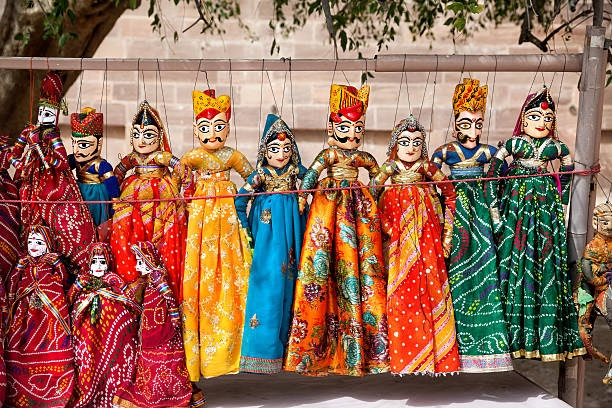
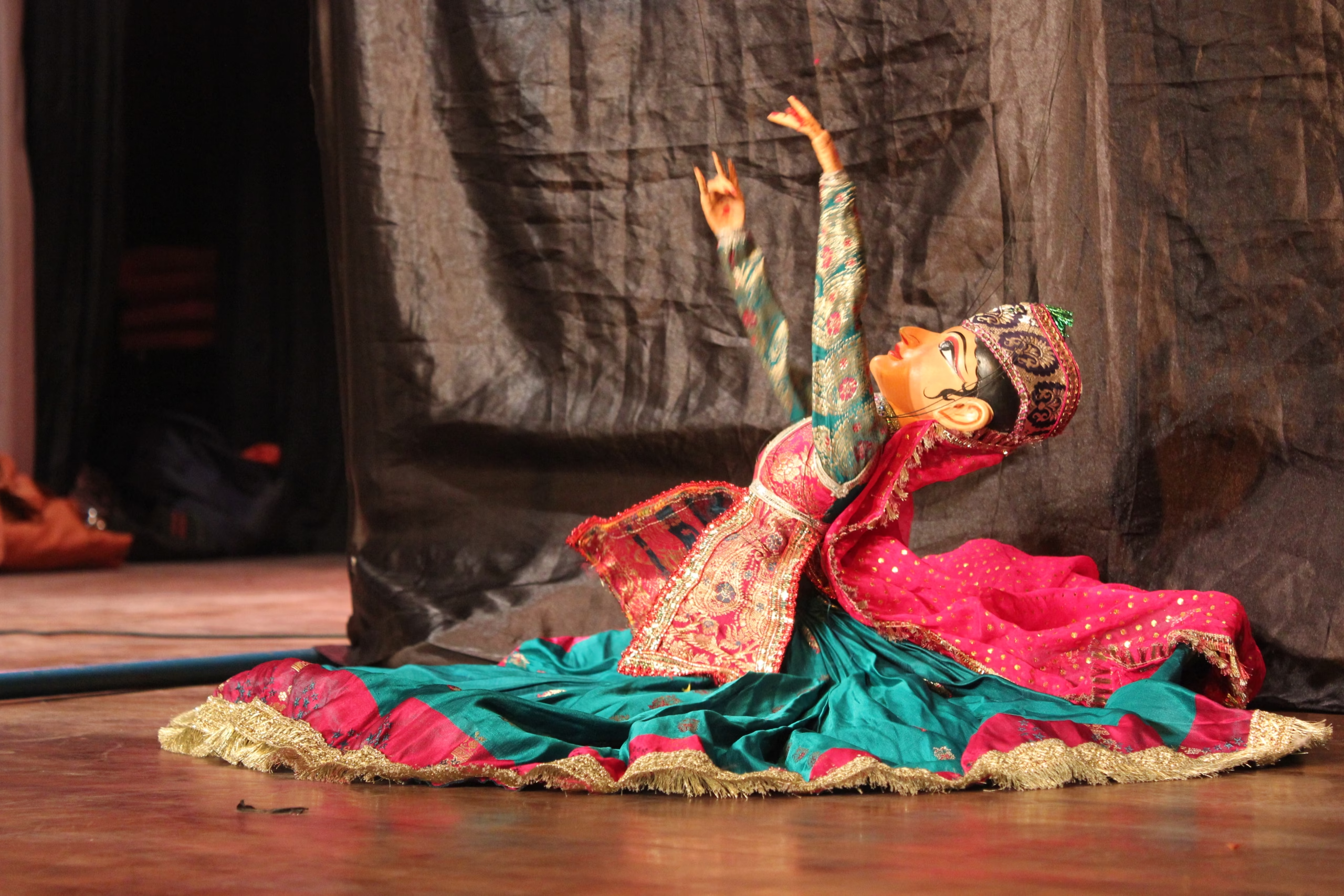
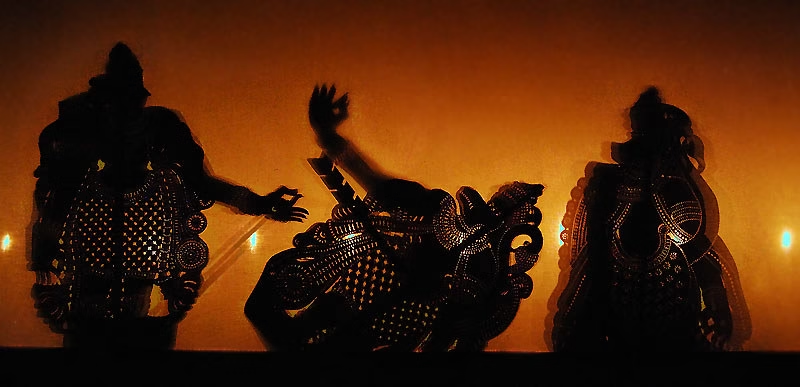

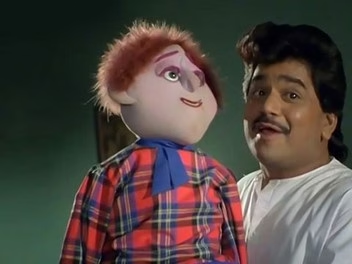
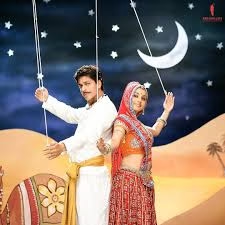
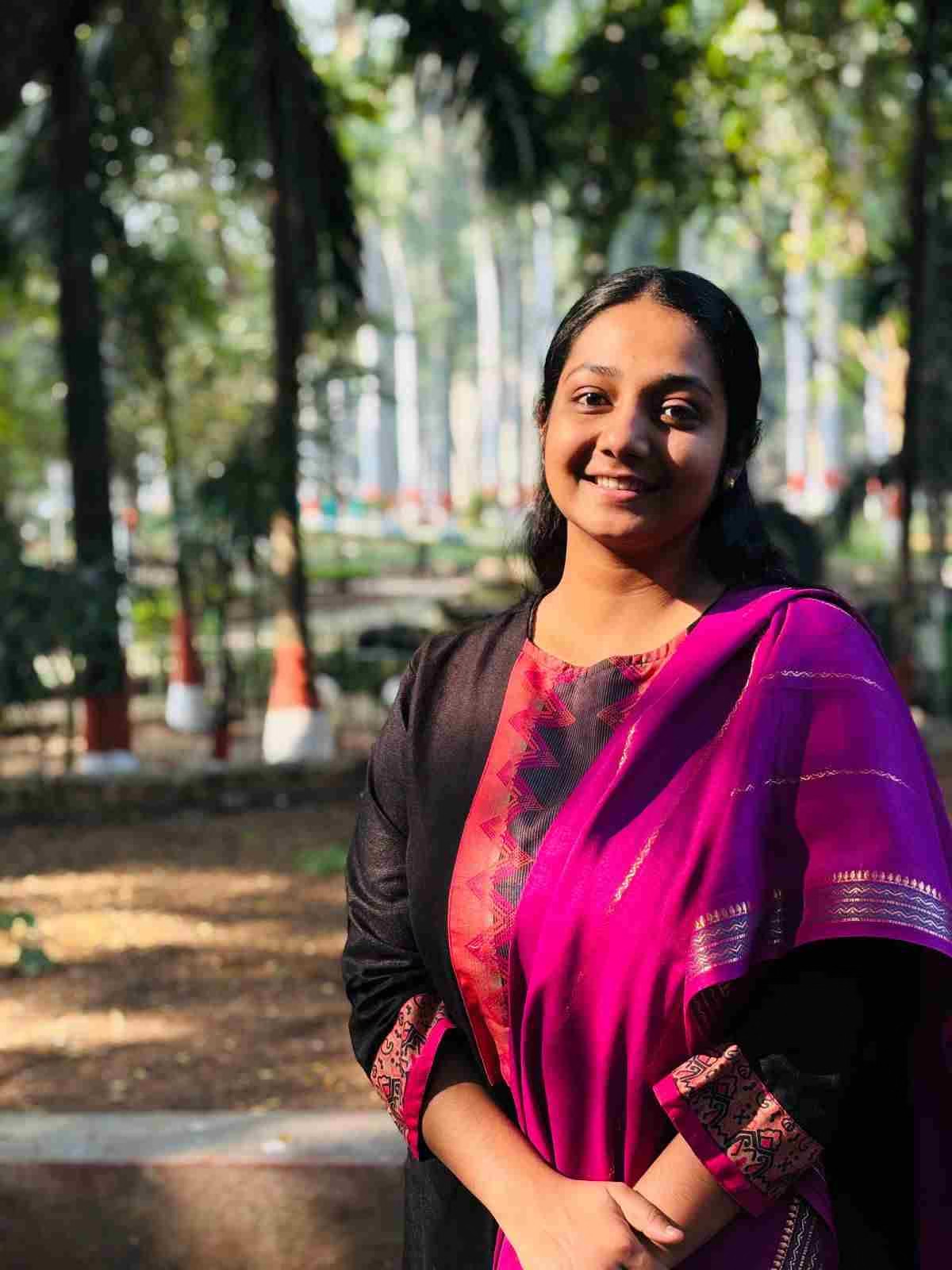
Leave a Reply